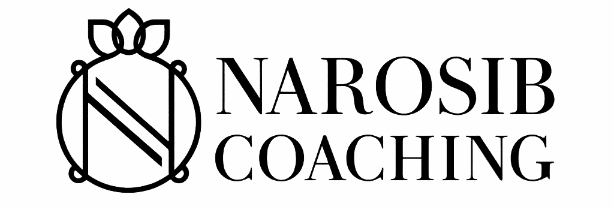
How to Develop a Brand Strategy Using the The Brand Archetypes Framework
Developing a solid brand strategy through the power of brand archetypes
My clients often hire me to support them on their leadership and business strategy as entrepreneurs, not for their branding!
Their idea of a brand strategy is something that prescribes their style and visuals through different platforms.
I am not known as a brand strategist and that is often not why people hire me: But in reality, I do get involved in developing their brand strategy.
Creating a logo and designing a website is one of the first things a lot of entrepreneurs do before launching their business.
Then they believe their job is already done with their brand development.
What happens next is they get stuck when it comes to creating content, they don’t know how to talk to their customers and suddenly they will feel uncomfortable being visible.
Not because they are shy or lack confidence:They don’t know what to talk about!
They feel their message is off and that they are often misunderstood.
They get tired of an audience who just follows but does not buy, complains about their prices and asks irrelevant questions.
This happens because they have not really created a brand with a personality: they have just created an outfit for their business. Keep reading, I will tell you what I mean by outfit.
The X factor or the psychological power of brands
Most purchasing decisions are made in the subconscious mind.
And even more decisions are made on an emotional basis! Human beings are not as rational as they seem 😉
We live in an environment full of distractions , so you only have a few seconds to stay in someone’s mind, you really want to hit them on an emotional -subconscious level and this is what your brand does!
And we are not talking about manipulation: We are talking about an authentic connection to the right person.
What happens that some brands can create this long lasting strong connection and others don’t? It’s definitely not only due to visuals and looks. It’s about their energy and their way of being and acting.
They all have relatable authentic personalities.
According to this article in Forbes magazine, “Your brand personality directs the tone of voice and style through which your brand communicates. You need to build the human side of your business so that your target audience can build a long-term relationship with your brand as if it were a person.”
Once you can imagine a human-like character for your business everything less like business strategy , marketing and content strategy comes together naturally.
What do we mean by brand personality?
Prioritising outfit over personality
When you create the visuals and the look of a business before asking deep questions about its purpose, actions and ways of being and doing, you’re almost prioritising outfit over the personality
Imagine someone is wearing a white uniform…
They may look like a doctor, but does it mean that they have the knowledge to be a doctor?
Would their uniform enable them to perform an operation?
Most entrepreneurs only pay attention to the external aspect of a brand.
But a brand is a much deeper concept. As Jeff Bezos, the founder of Amazon puts it, a brand is how others describe you when you’re not in the room.
You need something deeper than just the look to create this perception.
You need a personality that has a unique way of being and existing in this world. A true personality doesn’t just talk and look in a certain way: it also acts in a consistent way.
And where should actions come from? The business strategy. You can’t have a brand strategy that is not aligned with your business strategy.
Otherwise you will be one of those businesses with actions that don’t match their look.
This may have been possible in the past but not any more.
We are living in the age of information. People are thirsty for truth and authenticity. They have had enough!
Maybe a large corporation with a massive budget can afford a greenwashing campaign or cover up for some actions: but independent small businesses probably can’t.
Your hard earned small budget needs to be spent on more useful things.
Creating an authentic brand saves you money
“Authenticity according to this article on Entrepreneur magazine is having a genuine connection with your target audience”
But how does it work in reality and why does it matter?
We are living in an era where everyone can easily start a business.
Where I am based ( Switzerland) there is a lot of support available for starting a business, the process is simple and relatively quick, but that doesn’t mean your success is guaranteed just because you launched a business!
The barriers to entery are not as complex as they used to be. So the entrepreneurial scene is relatively crowded.
In a crowded market you need to be unique to catch attention. And the easiest and cheapest way to be unique is to be yourself.
It’s already given to you, why not embrace the qualities ( or weirdnesses!) you are given?
How to create a brand strategy when you don’t know your mission and business purpose?
When you go to a brand expert, the first thing they want to know is your why: your purpose and then they need to know about your customers.
Without this information it’s very hard to do a professional job on your brand story or identity.
Some entrepreneurs even feel ashamed that they don’t have a fashionable purpose to talk about!
In reality many new business owners don’t have a clear idea of their values, business purpose and why. They often don’t even know their ideal customers and the journey they have to go on to get ready to buy.
What they do is benchmarking: They look at the so-called competitors and similar brands and come up with a fashionable answer.
They try to Google their deep purpose!
Others who are really serious about finding their purpose through deep work and understanding their customer through testing their concept, feel stuck under time pressure.
And that is why I think entrepreneurs should hire advisors or coaches before investing in a designer or brand expert.
How can conscious leadership make entrepreneurs more successful?
10 lessons I learned after 4 years of self-employment
What if it takes 10 years until you know your true purpose?
Should you postpone your launch until you have all the answers?
Of course not! Life is too short!
So what do you need to do to move the needle and take action?
Firstly : You don’t find your purpose through searching: You create your purpose and refine it with experience. It’s not a waiting game.
Secondly : Maybe you can use a shortcut to get you closer to your ideal brand without needing to have all the answers.
How about being offered a selection of brand personalities where you chose one of two that resonates with you?
How to integrate brand strategy and business strategy
Many new entrepreneurs treat their brand development as a separate project than their strategy development.
They rely on their (or expert’s) intuition and knowledge to integrate the two.
This may not be an issue for seasoned entrepreneurs with business experience. But it’s a challenge for the new business owners.
And don’t be embarrassed if you have made the same mistake:I did the same back then when I had just launched my fashion brand.
I had hired brand consultants and designers and I had a semi-polished brand story. I had beautiful images, style guides and all the right colourways and templates.
But I always felt my message was not coming across the way I wanted it.
I also struggled with business development in new areas.
I was wondering if I could find a method to follow to integrate my brand and business strategy?
The worst waste of time and energy is indecision
I was constantly questioning my strategy and actions.
Should I launch this project or would it confuse my customers?
How would this product fit into my brand?
It’s so tiring to be lost between options and questions.
So I started searching for better ways of dealing with this indecision.
When I came across the brand archetype framework I felt I had found the holy grail of business!
This is probably an exaggeration as all methods and frameworks have their own limitations. Not everyone resonates with a specific framework. But so far I have seen my clients experience the same exciting eureka moment when I introduce them to this framework.
Brand strategy development through “the brand archetypes frameworks”
I initially got to know about it through a brand expert in a networking group.That event was targeted towards service based business owners and coaches.
I found it difficult to relate it to my context back then(a product based fashion business owner).
But it triggered my interest and made me research the concept further. I went on Amazon and bought the book that was written by the mastermind behind this methodology and it almost changed my life.
The concept of archetypes was originally created by the Swiss psychiatrist Carl Jung. It was not initially meant to be used in the business world.
Margaret Mark and Carol Pearson have developed this concept further and brought it to marketing and brand development.
This is the method that major brands in the world use to develop their brand.
This psychology based framework helps you create a brand with specific personality, value, voice and goals. It even brings your attention to the shadows or weaknesses of the personality you created.
It becomes much easier to create deep connections, evoke emotions in customer and tell stories that stay in the mind of customers.
Now what is an archetype and how many of them are we talking about?
Let me introduce you to the twelve archetypes or “stereotypical character styles”.
The twelve archetypes are:

Each archetype symbolises a way of being, a specific pattern of energy with a unique approach in behaving, decision making.
To work with the brand archetype framework you need to study the 12 archetypes and choose a primary one that resonates most with you.
Each archetype has its own values, characteristics, purpose, voice and choice of words.
I have described them extensively in this free masterclass I did together with Stephanie Fiteni, my favourite blogger and content strategist.
If you want to learn more about this topic in detail, then simply sign up here and you will be given access to the video recording of the masterclass and the slides!

